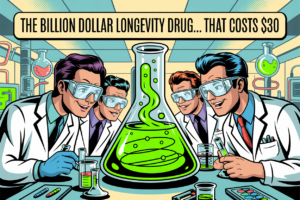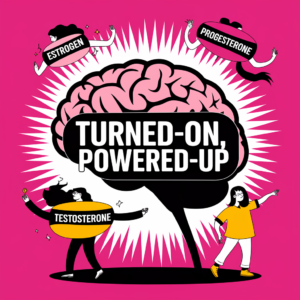You’re not broken. Your hormone therapy isn’t failing.
But your skin might be blocking everything.
Estrogen patches. Progesterone cream. Testosterone gel. You’ve tried it all, but some days feel right, and others are a hormonal black hole.
Here’s why: your skin isn’t just a surface. It’s a gate. And if that gate is flaky, dry, or layered with residue, your bioidentical hormones aren’t making it through.
This guide reveals how poor transdermal absorption silently sabotages your results—and what to do about it.
Learn how to exfoliate, prep, and hydrate your skin to feel the impact of your hormone replacement therapy.
Your Skin: Hormone Helper or Hormone Roadblock?
Think of your skin as more than just a covering. It’s your first line of defense. And the outermost layer—your stratum corneum—is especially selective.
It’s excellent at keeping out toxins, pollutants, and bacteria. But sometimes, it keeps out what you want, like bioidentical hormones from your progesterone cream, testosterone patch, or estrogen gel.
Those hormones might not make it through if your skin barrier is dry, flaky, or coated in leftover residue.
So even if your labs look fine, your menopause symptoms may still be shouting for attention.
Why Midlife Skin Plays a Bigger Role
Have you ever noticed that moisturizer doesn’t sink in the way it used to, or that your skin feels less responsive, less “alive”?
That’s not your imagination. That’s hormones in flux.
As we move through perimenopause and menopause, hormone levels shift—sometimes drastically. And those shifts show up on your skin.
- Estrogen dips, leading to dryness, thinning, and reduced elasticity
- Progesterone and testosterone fluctuate, triggering oiliness or breakouts
- Cortisol (hello, stress!) can spike, increasing inflammation
- Thyroid hormones may shift, making skin patchy, dry, or oily
- Melanin activity increases, resulting in dark spots or melasma
If you’re using natural hormone replacement and your skin seems to be working against you, it’s not you; it’s a delivery issue.
Are You Accidentally Blocking Your Hormones?
Even high-quality bioidentical hormone therapy can fall flat if your skin isn’t prepped to receive it. Here are three common barriers to transdermal absorption:
Skipping Exfoliation
As we age, dead skin cells hang around longer than they should. Without regular exfoliation, they form an invisible wall. That means your hormone cream might just be sitting on top—not soaking in.
Imagine trying to water a plant through a tarp. It’s effort without effect.
Applying to Unready Skin
Even “clean” skin may carry remnants of last night’s body lotion, adhesive residue from your patch, or oils from the day. That leftover layer can block hormone absorption like armor.
It’s like trying to charge your phone through a rubber case.
Dealing with Dryness
Dry skin isn’t just uncomfortable—it’s counterproductive. Moisturized skin is more flexible and receptive. When skin is dehydrated, hormones can’t absorb properly.
No matter how perfect the cream, it can’t work if the door’s closed.
How to Boost Hormone Absorption (Without Changing the Dose)
Good news: you don’t need to change your therapy—just your approach. Here’s how to help your hormone replacement therapy do its job better.
Exfoliate Like a Pro
Think of exfoliation as clearing the runway. No takeoff happens if the path’s cluttered.
Use a gentle AHA (alpha hydroxy acid) exfoliant like glycolic or lactic acid two to three times weekly. Focus on areas where you apply hormones: the inner arms, thighs, or abdomen.
- Lactic acid: great for sensitive skin
- Glycolic acid: deeper action for faster results
One clinical study found that combining 15% glycolic acid with 0.01% estradiol produced thicker skin and more collagen than estradiol alone.
Pro tip: Skip gritty scrubs. Chemical exfoliants work smarter and gentler.
Prep Before You Patch
Using testosterone patches or estrogen therapy? This one’s essential.
- Before applying a new patch, gently brush or cleanse the area with a soft cloth to remove oils, sweat, or adhesive residue.
- This helps your patch stick better and work better.
- Avoid alcohol wipes. They strip moisture and do more harm than good.
Give It Time
After exfoliating, wait an hour before applying your progesterone cream or other topicals. This allows your skin to settle, reducing the chance of irritation while increasing absorption.
Hydrate Wisely
Moisturized skin equals more efficient hormone delivery. But timing matters.
Use a light, water-based moisturizer earlier in the day or after your hormones have fully absorbed it. Avoid thick creams right before application—they can act like a seal and block the absorption you’re aiming for.
Not a Flaw. Just a Barrier.
You’ve adjusted your dose. Switched formats. Done everything right.
And still feel off?
It might not be about what you’re doing wrong. It could be the barrier doing its job a little too well.
This isn’t about vanity. It’s about physiology. You’re not broken. You’re just up against a layer that needs support.
How to Know It’s Working
When your skin and hormones are in sync, you’ll likely notice:
- Fewer flare-ups of menopause symptoms
- A more stable, grounded mood
- Smoother, clearer, more hydrated skin
- Better sleep
- A deeper sense that your treatment is finally clicking
Track how you feel—not just your labs. Your daily experience can reveal more than any number.
Hormone Absorption Checklist
- Cleanse with a gentle AHA to “prep the runway”
- Exfoliate hormone-application areas
- Hydrate—but not too close to application time
- Wait at least one hour post-exfoliation
- Journal your mood, energy, and symptoms daily
You’re Not Doing It Wrong
You’ve done everything right. The missing link? Your skin.
Support the barrier that delivers your hormones, and your therapy can finally work the way it should.
Same dose. Smarter skin. Real results.
Your skin isn’t resisting—it’s just waiting for the right approach. At HOT + Longevity, discover skin-smart routines and proven tools to help your hormones land where they matter most.













